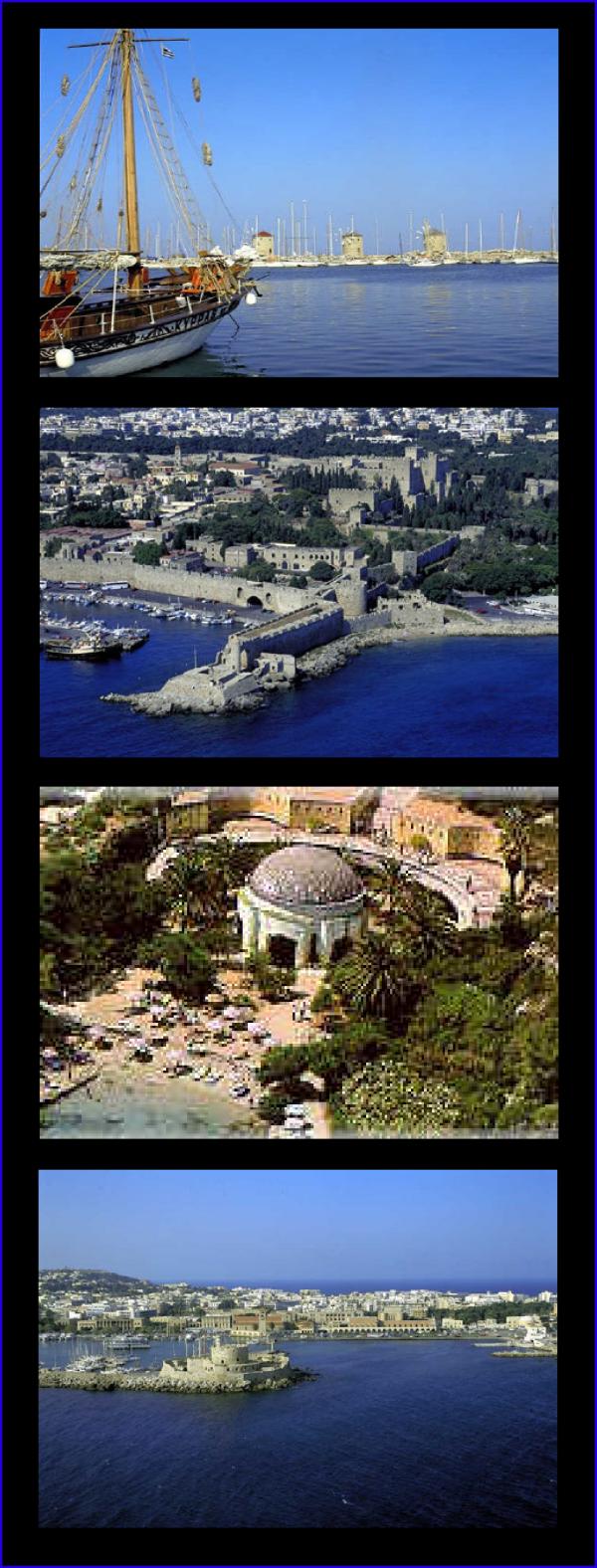Home
Scope
Location
Speakers
Program
Abstracts
Author index
Organizing Committee
Scientific Committee
Venue & Accomodation
Registration
News
Contact

|
 |

Program
All days
| Sunday | Monday | Tuesday | Wednesday | Thursday | Posters | hide abstracts
 Day 4: Wednesday morning, September 6, 2006
Day 4: Wednesday morning, September 6, 2006
Session 5 Non-equilibrium thermodynamics: Approaches and formalisms
Chair: A.N. Beris
08:00
Towards a thermodynamics of complex systems
G. Nicolis
Interdisciplinary Center for Nonlinear Phenomena and Complex Systems, Universite Libre de Bruxelles, C.P. 231, Bvd. du Triomphe, 1050 Brussels, Belgium
The limitations of the traditional thermodynamic approach in dealing with complex phenomena far from thermodynamic equilibrium are reviewed. An enlarged formulation of thermodynamics incorporating concepts and tools from nonlinear science and stochastic processes is outlined and shown to provide universal relationships of a new kind linking the relevant variables, as well as efficient methods for characterizing the structure and dynamics of large classes of complex nonlinear systems. Some implications of this formalism in selected problems of current concern are explored.
08:50
Non-Equilibrium Thermodynamics of Boundary Conditions
H.C. Öttinger
ETH Zürich, Department of Materials, Institute of Polymers, HCI H 543, CH-8093 Zürich, Switzerland
While the field equations for complex fluids are usually formulated such that they respect the principles of nonequilibrium thermodynamics, the choice of appropriate boundary conditions is often considered as a purely mathematical problem. We here emphasize that also the formulation of boundary conditions should be guided by thermodynamics. The GENERIC framework is generalized to systems consisting of coupled 3-d bulk and 2-d boundary variables. The ideas and concepts are illustrated for two examples: (i) bulk and surface diffusion phenomena for a dilute suspension of Brownian particles, and (ii) velocity slip of entangled polymer melts at solid walls.
09:15
Extended thermodynamics of polymers and superfluids
D. Jou1, J. Casas-Vazquez1, M. Criado-Sancho2, M.S. Mongiovi3
1 Universitat Autonoma de Barcelona, Bellaterra, Catalonia, Spain
2 UNED (Universidad Nacional de Education a Distancia), Madrid, Spain
3 Universita di Palermo, Palermo, Italy
The viscous pressure tensor may be used as a thermodynamic independent variable in a variety of situations. This leads to evolution equations for the viscous pressure tensor, and to generalized non-equilibrium entropy and chemical potential depending on the viscous pressure. We will illustrate the application of this extended thermodynamic formalism to polymer solutions and blends, and to quantum turbulence in superfluids. For polymer solutions, we will deal with shear-induced effects on the stability of the solution and phase separation, for superfluids, we will focus our attention on quantum turbulence induced by a combination of a heat flux and rotation.
09:40
Kinematics of turbulence in simple and polymeric fluids
M. Grmela
Ecole Polytechnique de Montreal, Montreal H3C 3A7, Canada
How to detect and describe the complex features of solutions of hydrodynamic equations representing turbulent flows? A new route, based on the Hamiltonian (GENERIC) formulation of Lagrangian viewpoint of fluid motion is explored. Two-point distribution function of fluid particles is chosen as the state variable. The Hamiltonian formulation of its time equation allows to consider separately the kinematics (Poisson bracket) and the dynamics (generating potential). Only the kinematics is discussed. The Poisson bracket expressing it is rigorously identified. The resulting time evolution equations are shown, in a particular case, to unify and extend the equations arising in Reynolds and Lagrange averaging. Parallel discussion of the turbulent kinematics in simple and polymeric fluids offers a new view of the difference in their turbulent flows.
10:05 Coffee break 10:20
Nonequilibrium thermodynamics of elasto-viscoplastic deformation
M. Hütter, T.A. Tervoort, H.C. Öttinger
Department of Materials, ETH Zurich, Switzerland
Plasticity theories describe the transition from compressible elastic behavior at low stress to isochoric plastic deformation at high stress levels, and are often formulated by relating the elastic strain rate to an objective stress rate. In this contribution, the modeling of such behavior by way of nonequilibrium thermodynamics is examined, namely by using the GENERIC formalism. First, nonisothermal general elasticity is formulated in terms of the left Cauchy-Green strain tensor, the temperature, and the momentum density. In a second step, we study specific relaxation mechanisms of the strain tensor to describe elasto-viscoplastic behavior with emphasis on volume relaxation, and discuss the relation to common inelastic deformation models. For various equations of state, predictions of the model for specific mechanical tests are presented.
10:45
On a possible difference between the barycentric velocity and the velocity that gives translational momentum in fluids
D. Bedeaux1, S. Kjelstrup1, H.C. Öttinger2
1 Dept. of Chem, Norw. Univ. of Sc. and Techn, Trondheim, Norway
2 ETH Zürich, Dept. of Materials, Polymer Physics, Switzerland
This contribution explores the rather controversial proposal by Howard Brenner that the velocities that follow from the mass flux and from the translational momentum in a fluid are not equal. We show that standard non-equilibrium thermodynamics can be formulated such that it is in full agreement with this proposal. We argue that the merits of the proposal must be based on the physics of the problem. It cannot be dismissed as being in contradiction with non-equilibrium thermodynamics. We show that Brenner's proposal gives a separation in a binary mixture beyond that of the Soret equilibrium, due to a gradient in the pressure divided by the temperature. Experiments to verify this are proposed.
11:10
Non-Equilibrium Thermodynamic Fluctuations within the Framework of Path Integrals
A. McKane1, F. Vazquez2, M.A. Olivares-Robles3
1 Theory Group, School of Physics and Astronomy, University of Manchester M13 9PL, United Kingdom
2 Facultad de Ciencias, UAEM, Av. Universidad 1001, Cuernavaca, Morelos 62209, Mexico
3 Seccion de Investigacion y Posgrado, ESIME-Culhuacan, IPN, Mexico D.F.
Fluctuational non-equilibrium thermodynamics is formulated in terms of path integrals. The theory is presented in such a way that it will be applicable to a wide class of stochastic processes, including non-Markovian processes. In particular, we show how to construct the path-integral scheme when the noise-correlation matrix is singular, which is the case for fluctuations in non-equilibrium thermodynamics, since the continuity equation has no stochastic term associated with it. The theory is illustrated by calculating the light-scattering spectrum in fluids. Non-linear contributions to this quantity are also computed.
11:35 Discussion
A.N. Beris 12:05 Lunch
 Day 4: Wednesday afternoon, September 6, 2006
Day 4: Wednesday afternoon, September 6, 2006
Session 6 Coarse-graining and mesoscopic dynamics - some mathematical aspects
Chair: B.J. Edwards
14:00
Dissipation and Stress
P. Constantin
Department of Mathematics, The University of Chicago, Chicago, IL 60637, USA
I will discuss energetics, dynamics and asymptotics of systems consisting of fluids and particles from a mathematical perspective.
14:25
Self-similarity in Smoluchowski's coagulation equation
G. Menon1, R.L. Pego2
1 Division of Applied Mathematics, Brown University, USA
2 Depat. of Mathematical Sciences, Carnegie Mellon University, USA
Smoluchowski's coagulation equations are a fundamental mean-field model of coalescence describing for example, the formation of clouds, and the kinetics of polymerization. An issue of importance is `dynamic scaling' or the approach to self-similarity. I will describe some interesting mathematical features of this non-equilibrium system related to the dynamic scaling hypothesis.
14:50
Stress relaxation theories in the approximation of polyconvex elastodynamics by viscoelasticity
T. Tzavaras
Department of Mathematics, University of Maryland, USA
We consider a model of stress relaxation approximating the equations of elastodynamics in Lagrangian coordinates. Necessary and sufficient conditions are derived for the model to be equipped with a global free energy and to have positive entropy production. For convex equilibrium potentials, we prove a relative energy estimate that provides convergence to the equations of elastodynamics when the solutions are smooth. In the case of polyconvex elastodynamics the situation is delicate because it is known from general theory of relaxation processes that the approximating system cannot have a convex energy as well. On the other hand, the equations of polyconvex elastodynamics can be embedded to an augmented symmetric hyperbolic system. We devise a model of stress relaxation motivated by the format of the enlargement process which formally approximates the equations of polyconvex elastodynamics. The model is endowed with an entropy function which is not convex but rather of polyconvex type. Using relative entropy ideas we prove a stability estimate and convergence of the stress relaxation model to polyconvex elastodynamics in the smooth regime.
15:15
Numerical analysis of coarse-graining for stochastic systems
P. Plechac
Mathematics Institute, University of Warwick, United Kingdom
We discuss some general mathematical issues arising in problems where the microscopic Markov process is approximated by a hierarchy of coarse-grained processes. In applications the microscopic model is often coupled with continuum description (using PDEs) on larger scales. We describe hierarchy of coarse-grained stochastic processes that approximate, on larger scales, microscopic lattice systems simulated by (kinetic) Monte Carlo algorithm. We present mathematical tools (e.g., estimates on the loss of information between the coarse-grained and the microscopic probability measures) developed for error control in microscopic simulations using the coarse-grained stochastic processes. On specific examples of lattice spin dynamics we demonstrate that computational implementation of constructed coarse-grained approximation leads to significant CPU speed up of simulations.
15:40 Coffee break 15:55
Mathematical and computational methods for coarse-graining
M.A. Katsoulakis
University of Massachusetts, Amherst, USA
In this talk we discuss recent progress in obtaining coarse-grained stochastic approximations of microscopic lattice dynamics. We prove rigorous error estimates both at equilibrium and non-equilibrium in terms of weak convergence and relative entropy calculations and obtain a posteriori estimates that can guide adaptive coarse-grained simulations. We also demonstrate, with direct comparisons between microscopic Monte Carlo and coarse-grained simulations, that the derived mesoscopic models provide a substantial CPU reduction in the computational effort. Finally we discuss the use of such coarse-grained models in the simulation of hybrid systems. Such models arise as couplings of stochastic, spatially distributed systems representing active small scales to deterministic macroscopic equations and are commonplace in applications ranging from catalysis and deposition processes to complex biological cell networks.
16:20
Some mathematical issues arising in the multiscale modelling of complex fluids
C. Le Bris
CERMICS, Ecole Nationale des Ponts et Chaussees, France
We will investigate some mathematical issues related to the modeling of complex fluids. The focus will be both on polymeric fluid flows and suspensions. In particular, we will deal with the well-posedness of the equations and their long-time behaviour.
16:45 Discussion
B.J. Edwards 17:00 Free time 20:30 Gala dinner 22:30 End of workshop day 4/5 |
 |
 |




